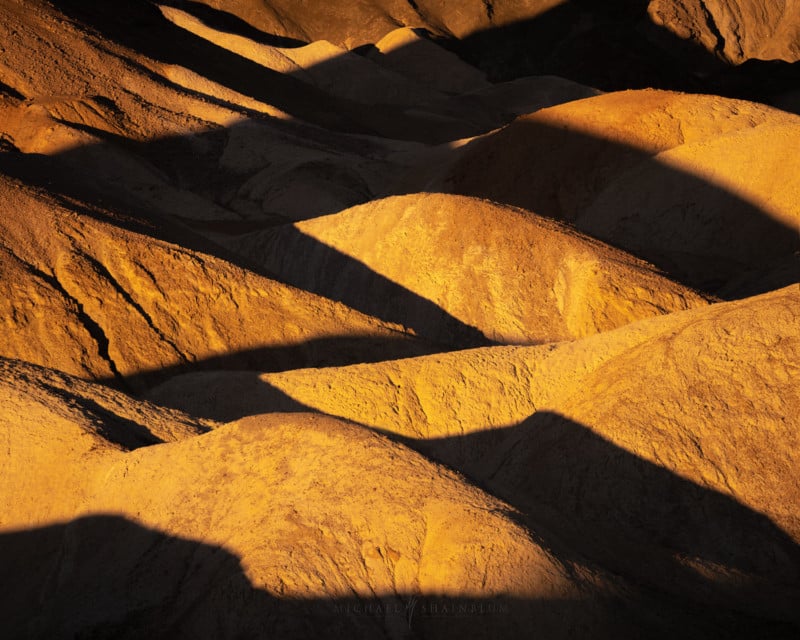If the weather forecast shows clear skies and bright sunlight, it doesn’t mean photographers should abandon their plans for a landscape shoot. Photographer Michael Shainblum has shared tips on how he leverages these weather conditions to come home with a successful set of photos.
At some point in their career, every landscape photographer will come across unfavorable and challenging shooting conditions, be it a brewing storm or bright mid-day sunlight with no clouds. Although clear skies may make for a pleasant walk, they are still not the shooting conditions of choice for many landscape photographers as they provide visual interest in an area that would otherwise feel blank and empty.
Shooting Right After the Sun Dips
In his latest video, Shainblum traveled to Death Valley to capture the waves of sand and rock, all covered in different shades of brown, orange, and — at times — purple and blue. The moment the sun dips behind the summit, the bright desert sky shifts to a more diffused light that illuminates the different peaks and valleys.
![]()
Due to a lack of clouds, Shainblum altered his shooting strategy. Instead of focusing on the scene as a whole, Shainblum opted for abstract close-ups of the valley, honing in on the different directions and colors of the rocks. As the sun was going down, he shot using long exposures and added some dodging and burning in post-processing to help colors become more striking and vivid.
![]()
The lines found in nature can help frame the shot, too, especially in a location like the desert and badlands. Instead of hunting for compositions using the viewfinder alone, Shainblum looked around and analyzed the view to find those abstract fragments and patterns that were particularly interesting.
![]()
![]()
At this time of day, the light is constantly changing. Just a few moments after the sunset, photographers can find that a spot captured earlier looks different, as the last remaining warmth of the sun spills over the scene.
Harsh Day Light Can Still Deliver
Although Shainblum made the most out of the clear blue skies by shooting after the sunset, the ability to shoot in harsh sunlight is an important skill for every landscape photographer to have in their arsenal, too.
![]()

Direct sunlight will be more challenging to photograph but will create more contrast and add drama to an image. The difficulty lies in finding pleasing compositions where the harsh light doesn’t obstruct the natural patterns of the land but instead complements them.
“There really is no such thing as bad lighting, you just have to know how to use it,” Shainblum concludes. Regardless of the weather forecast, landscape photographers can look at the land in front of them and find a way to approach it.
More landscape videos like the one above can be found on Shainblum’s YouTube Channel, with his photography portfolio available on his website and Instagram.
Image credits: Photos by Michael Shainblum.
Author: Anete Lusina
Source: Petapixel



